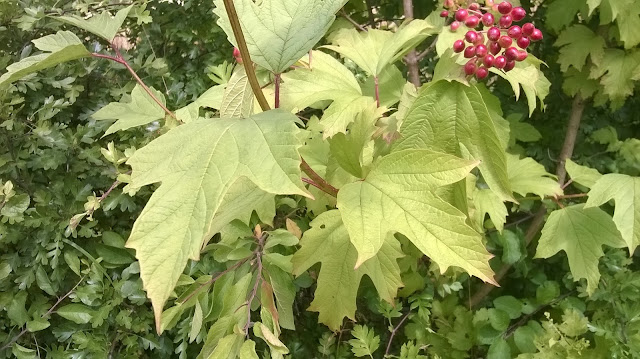After finding this species again recently, I thought I would see what my Hillier Manual of Trees and Shrubs had to say on the matter. They also mention the glands but in an entirely different context, and perhaps this will stand closer scrutiny. The wording here is 'the petiole is only shallowly grooved and bears small glands. The petioles of Viburnum opulus are broadly grooved and bear large disc-like glands'.
I have no idea how our plants compare with the wild American plant. Do we have the pure form, or have our stocks been muddied in cultivation through contamination by Guelder-rose, and potentially Asian Guelder-rose (Viburnum sargentii) also? Given the mess of hawthorns appearing in the countryside, I suspect this is highly likely. It still merits recording though, even if we end up with a different solution from the one we started with.




No comments:
Post a Comment